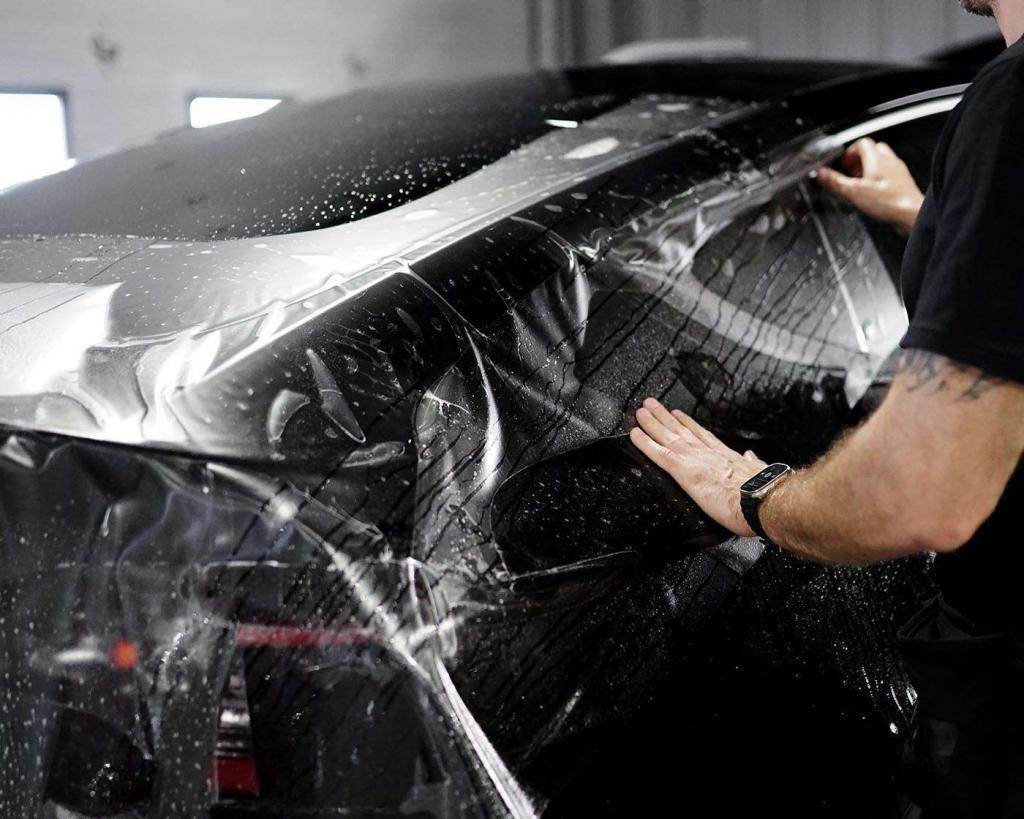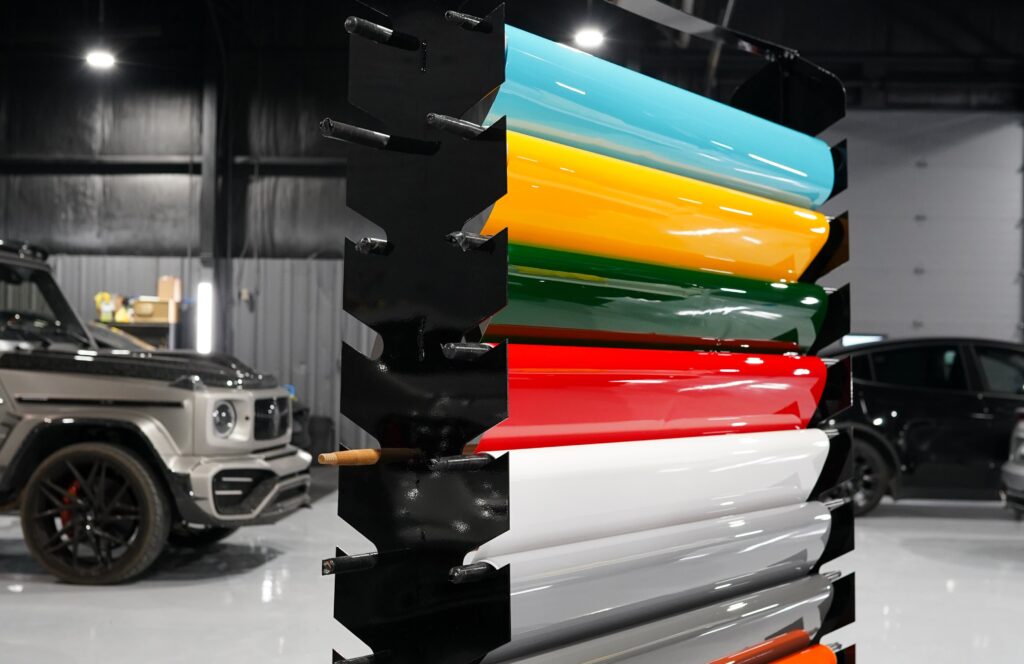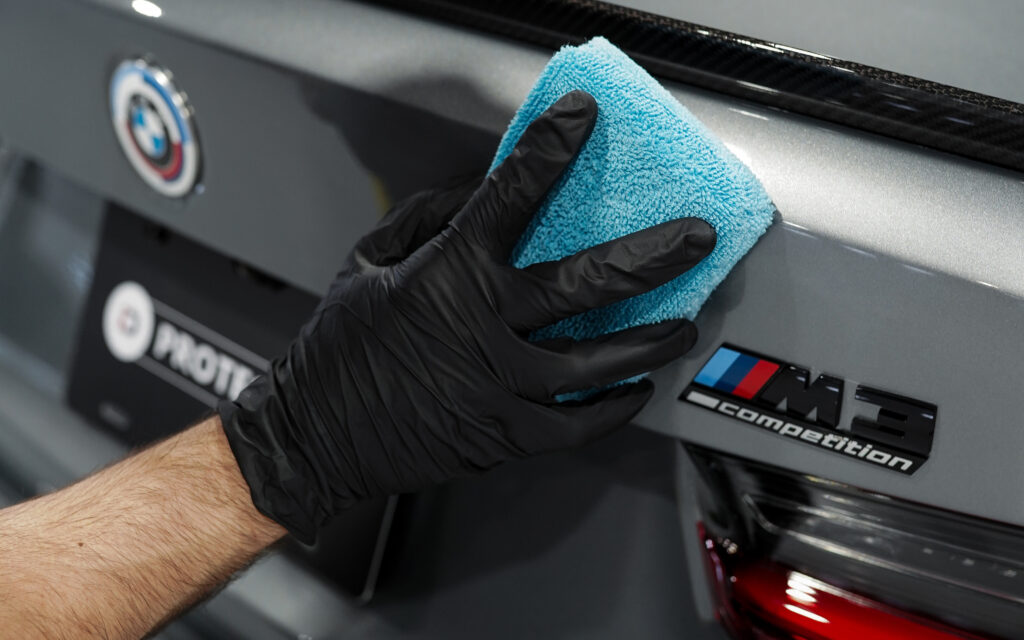
The world of car detailing can be confusing for beginners, with lots of fancy words and products. But there’s one product that stands out – Paint Protection Film. It’s not like any other product. It’s a game-changer for car detailing. It’s like a suit of armour for your precious vehicle. But what is it? What is it made of? How is it made? Let’s take a trip to uncover the secrets behind PPF.
What is Paint Protection Film?
Paint Protection Film, also known as PPF, is an amazing technology that helps protect your car. It was originally created to protect helicopter rotors from dirt and debris, but now it’s used to keep your vehicle’s paint looking great. PPF is like an invisible shield that covers your car’s paint, keeping it safe from things like rocks, bird droppings, acid rain, and the sun’s harmful rays. With PPF, you can drive without worrying about your paint getting dull or damaged. It’s a popular choice for car owners and dealerships all over the world.
Components of Paint Protection Film
Let’s now delve into the composition of PPF. You’ll be amazed to learn that this thin layer of film consists of three major components.
- The Base Material: PPF starts with a base, usually made of polyurethane. This magic material offers flexibility, clarity, and resistance to impact and abrasion.
- The Adhesive Layer: Next comes the adhesive layer. It could be acrylic or polyurethane-based, ensuring the film stays on your car’s paint.
- The Top Coat: The final layer is a clear top coat, which offers self-healing properties and boosts the film’s resistance to contamination and discoloration.
Together, these layers create the superhero of all car protection products that we know and love today.

How Paint Protection Film is Made
The process of creating PPF is both simple and complex. It begins with Polyurethane Dispersion, a process that involves mixing polyurethane with water and other necessary chemicals. The resulting solution is then cast onto a casting sheet – this is where the ‘Base Material’ is born.
Next comes the Polyurethane Reaction, where the casted film is baked, transforming it into a solid form. It’s in this stage the ‘Adhesive Layer’ is added to the base.
Then, we move to the Top Coat Application, where the top coat is applied to the film. This gives the film its glossy, shiny finish, and self-healing properties.
Lastly, the Inspection and Quality Control phase ensures only the best-quality films make it to the market. Every inch of the film is inspected, making sure it meets the quality and performance standards.
Performance of Paint Protection Film
The performance of PPF can be broken down into three primary areas:
- Durability and Longevity: High-quality PPFs can last for years, providing steadfast protection against scratches and chips.
- Resistance to external factors: PPFs are designed to withstand the harshest environmental conditions, from UV rays to acidic bird droppings.
- Impact on Car’s Appearance: A well-installed PPF enhances the car’s appearance, giving it a glossy, fresh-from-the-showroom look.
Comparison with Other Protective Coatings
The world of protective coatings is vast, with wax and sealant, ceramic coating, and PPF, all vying for your attention. Each comes with its composition, effectiveness, and protective features. While wax and sealants primarily offer shine and minor protection against external elements, the ceramic coating provides a balance between protection and aesthetics. PPF, meanwhile, is the ultimate form of protection, shielding your car against almost any damage.
Common Misconceptions about Paint Protection Film
It’s time to bust some myths about PPF. Some believe PPF negatively affects the car’s paint job. On the contrary, PPF protects the paint from damage without altering its original colour or finish.
Another myth is that PPF is high maintenance. In reality, PPF requires minimal maintenance. Regular washing and occasional waxing are enough to keep it looking new for years.
Choosing the Right Paint Protection Film
Choosing the right PPF can seem daunting, given the numerous brands and types available. It’s essential to consider factors such as the film’s clarity, durability, self-healing properties, and warranty when making your decision. Remember, understanding the film’s composition can provide valuable insights into its performance, helping you make an informed decision. Our team at ID Protection is here to help you with any questions you have about PPF and PPF applications. If you would like to find out how much PPF would cost for your vehicle, simply request a free quote.
In conclusion, the PPF is more than just an ordinary detailing product for your car. It serves as an investment that ensures the long-lasting beauty and protection of your precious vehicle. With PPF, you can safeguard your car’s exterior from various elements that could potentially damage its paintwork. By applying this protective film, you can enjoy peace of mind knowing that your car will stay looking pristine and stylish for years to come.


